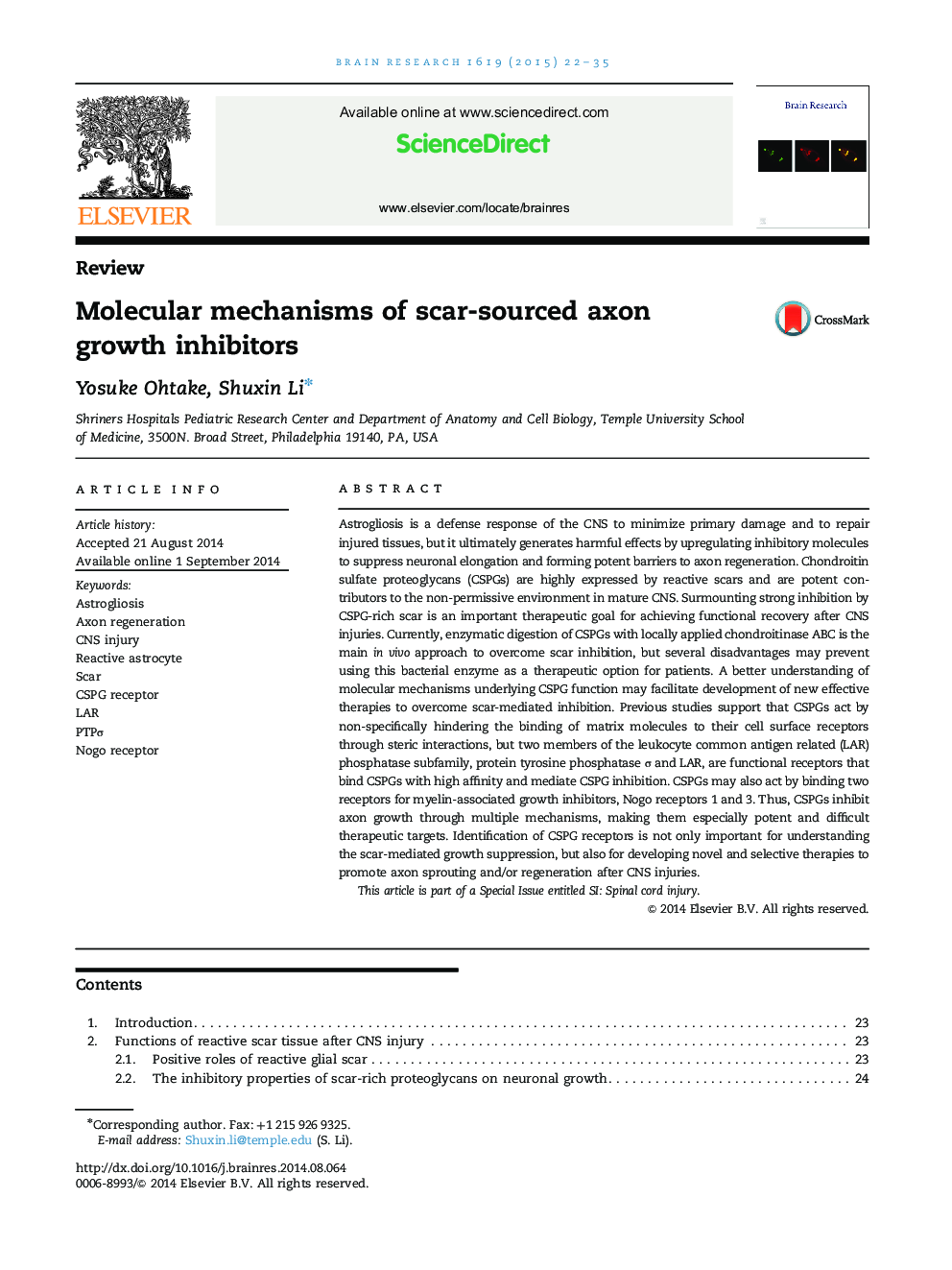| کد مقاله | کد نشریه | سال انتشار | مقاله انگلیسی | نسخه تمام متن |
|---|---|---|---|---|
| 6262989 | 1613820 | 2015 | 14 صفحه PDF | دانلود رایگان |
- As a defense response of the CNS to injury, astrogliosis suppresses neuronal regeneration.
- Chondroitin sulfate proteoglycans expressed by reactive scar contribute to regeneration failure.
- Protein tyrosine phosphatase Ï and LAR are functional receptors of CSPG inhibitors.
- Overcoming scar-mediated growth suppression may promote CNS regeneration and repair.
Astrogliosis is a defense response of the CNS to minimize primary damage and to repair injured tissues, but it ultimately generates harmful effects by upregulating inhibitory molecules to suppress neuronal elongation and forming potent barriers to axon regeneration. Chondroitin sulfate proteoglycans (CSPGs) are highly expressed by reactive scars and are potent contributors to the non-permissive environment in mature CNS. Surmounting strong inhibition by CSPG-rich scar is an important therapeutic goal for achieving functional recovery after CNS injuries. Currently, enzymatic digestion of CSPGs with locally applied chondroitinase ABC is the main in vivo approach to overcome scar inhibition, but several disadvantages may prevent using this bacterial enzyme as a therapeutic option for patients. A better understanding of molecular mechanisms underlying CSPG function may facilitate development of new effective therapies to overcome scar-mediated inhibition. Previous studies support that CSPGs act by non-specifically hindering the binding of matrix molecules to their cell surface receptors through steric interactions, but two members of the leukocyte common antigen related (LAR) phosphatase subfamily, protein tyrosine phosphatase Ï and LAR, are functional receptors that bind CSPGs with high affinity and mediate CSPG inhibition. CSPGs may also act by binding two receptors for myelin-associated growth inhibitors, Nogo receptors 1 and 3. Thus, CSPGs inhibit axon growth through multiple mechanisms, making them especially potent and difficult therapeutic targets. Identification of CSPG receptors is not only important for understanding the scar-mediated growth suppression, but also for developing novel and selective therapies to promote axon sprouting and/or regeneration after CNS injuries.This article is part of a Special Issue entitled SI: Spinal cord injury.
Journal: Brain Research - Volume 1619, 4 September 2015, Pages 22-35
